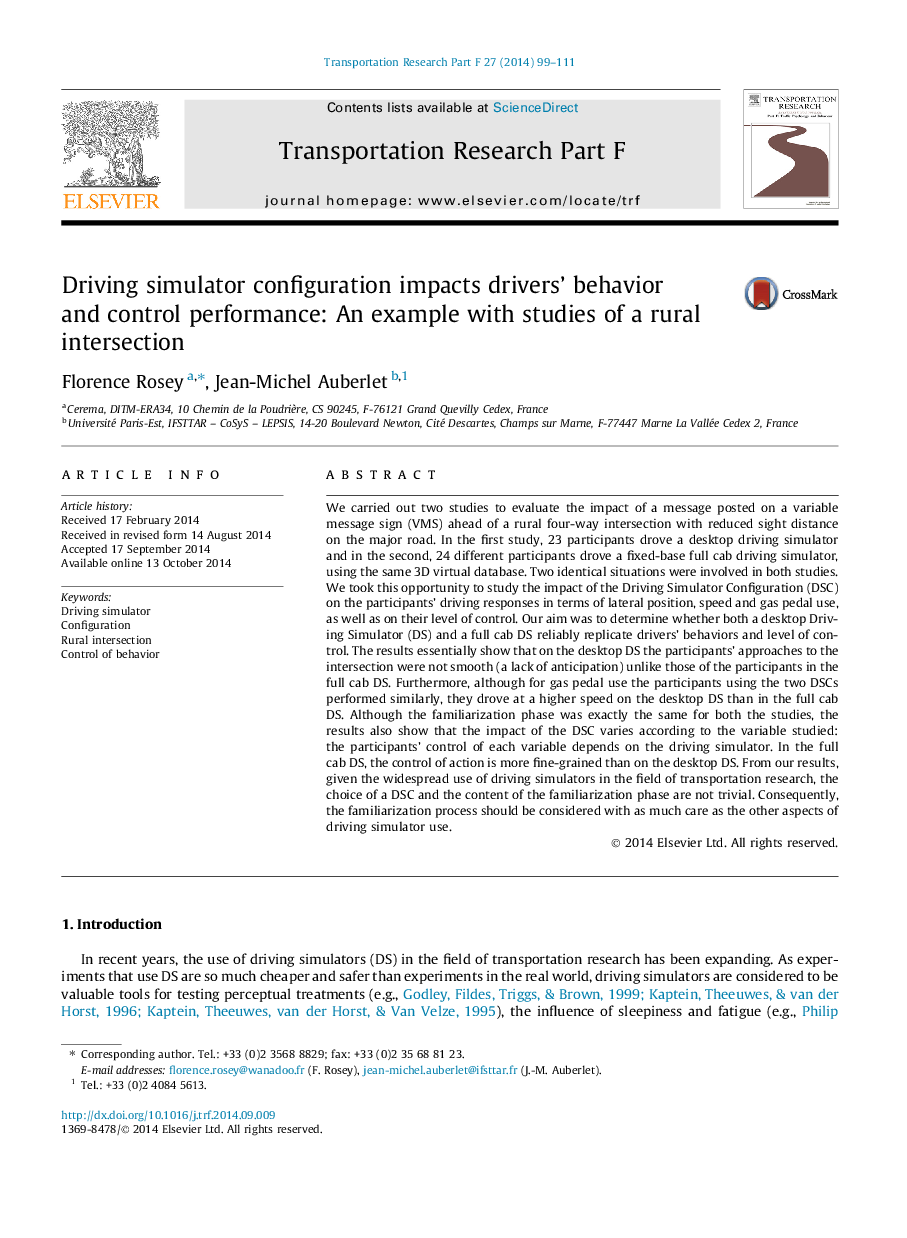| کد مقاله | کد نشریه | سال انتشار | مقاله انگلیسی | نسخه تمام متن |
|---|---|---|---|---|
| 897718 | 915186 | 2014 | 13 صفحه PDF | دانلود رایگان |
• We evaluated the impact of the driving simulator type on the drivers’ behavior.
• Participants drove a desktop or a full-cab driving simulator.
• There are not reliably replicated drivers’ behaviors or level of control.
• On the desktop DS, the speeds are higher than on the full-cab one.
• On the full-cab DS, the control of the actions is fine-gained than on the desktop one.
We carried out two studies to evaluate the impact of a message posted on a variable message sign (VMS) ahead of a rural four-way intersection with reduced sight distance on the major road. In the first study, 23 participants drove a desktop driving simulator and in the second, 24 different participants drove a fixed-base full cab driving simulator, using the same 3D virtual database. Two identical situations were involved in both studies. We took this opportunity to study the impact of the Driving Simulator Configuration (DSC) on the participants’ driving responses in terms of lateral position, speed and gas pedal use, as well as on their level of control. Our aim was to determine whether both a desktop Driving Simulator (DS) and a full cab DS reliably replicate drivers’ behaviors and level of control. The results essentially show that on the desktop DS the participants’ approaches to the intersection were not smooth (a lack of anticipation) unlike those of the participants in the full cab DS. Furthermore, although for gas pedal use the participants using the two DSCs performed similarly, they drove at a higher speed on the desktop DS than in the full cab DS. Although the familiarization phase was exactly the same for both the studies, the results also show that the impact of the DSC varies according to the variable studied: the participants’ control of each variable depends on the driving simulator. In the full cab DS, the control of action is more fine-grained than on the desktop DS. From our results, given the widespread use of driving simulators in the field of transportation research, the choice of a DSC and the content of the familiarization phase are not trivial. Consequently, the familiarization process should be considered with as much care as the other aspects of driving simulator use.
Journal: Transportation Research Part F: Traffic Psychology and Behaviour - Volume 27, Part A, November 2014, Pages 99–111
